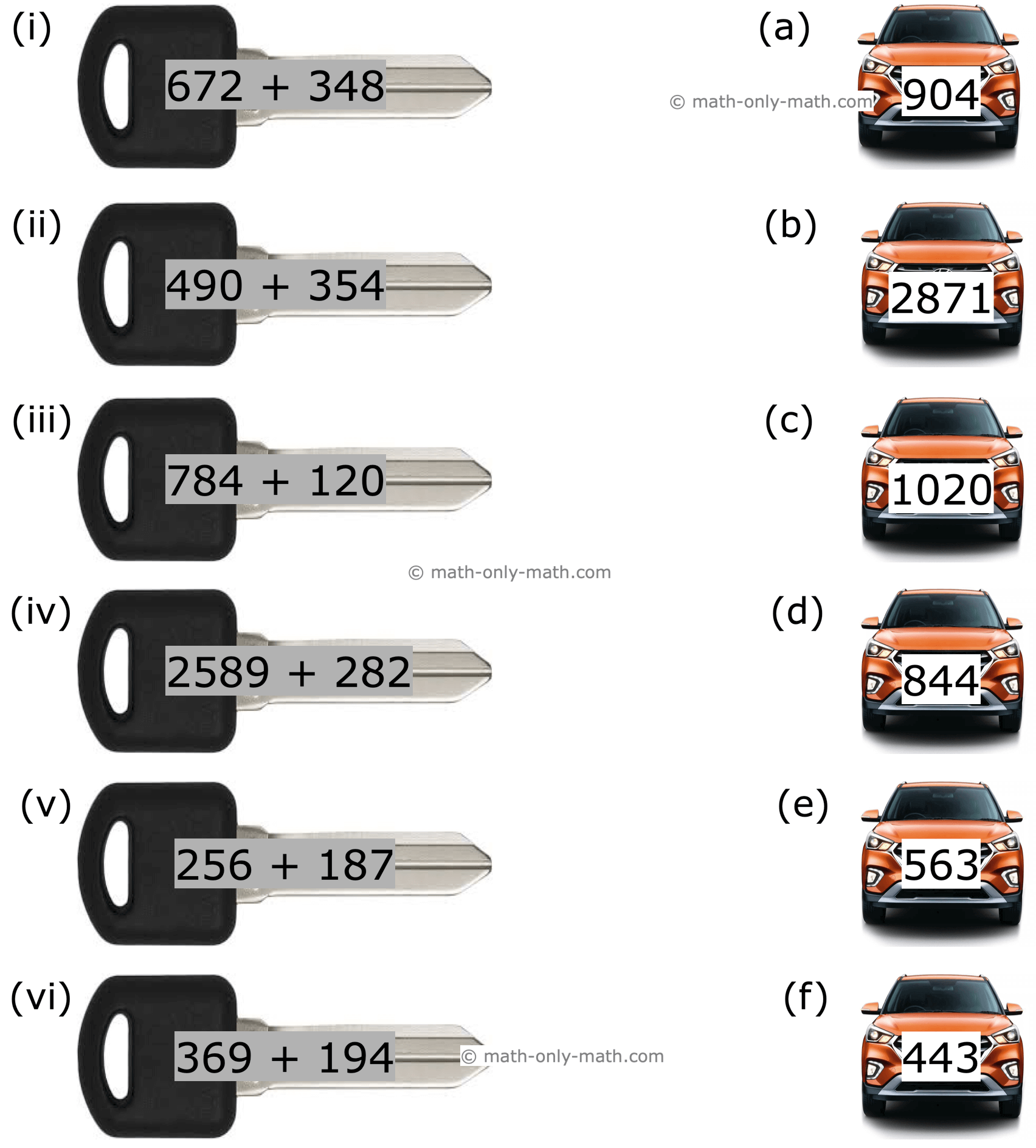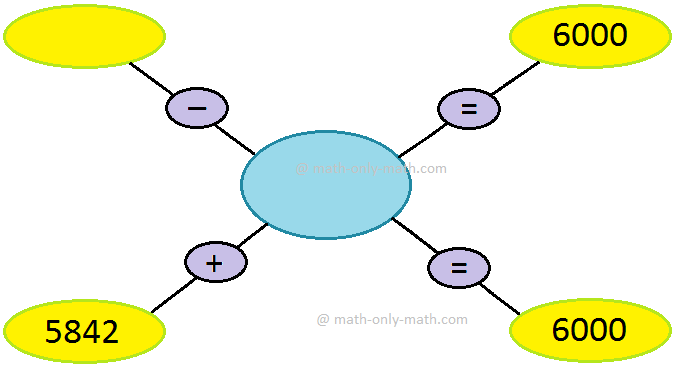Similar and Dissimilar Surds
We will discuss about similar and dissimilar surds and their definitions.
Definition of Similar Surds:
Two or more surds are said to be similar or like surds if they have the same surd-factor.
or,
Two or more surds are said to be similar or like surds if they can be so reduced as to have the same surd-factor.
For example \(\sqrt[2]{2}\), \(2\sqrt[2]{2}\), \(5\sqrt[2]{2}\), \(7\sqrt[2]{2}\) are similar surds as all the surds contain same irrational factor \(\sqrt[2]{2}\). So the order of the surds and the radicands both should be same for similar surds.
Consider the following surds \(2\sqrt[2]{3}\), \(4\sqrt[2]{27}\), \(7\sqrt[2]{243}\), \(5\sqrt[2]{75}\)
The above surds have different irrational factor or surd factor but they can be reduced to same irrational factor containing \(\sqrt[2]{3}\).
\(4\sqrt[2]{27}\) = \(4\sqrt[2]{9\times 3}\) = \(4\sqrt[2]{3^{2}\times 3}\)= \(12\sqrt[2]{3}\)
\(7\sqrt[2]{243}\) = \(7\sqrt[2]{81\times 3}\) = \(4\sqrt[2]{9^{2}\times 3}\) = \(36\sqrt[2]{3}\)
\(5\sqrt[2]{75}\) = \(5\sqrt[2]{25\times 3}\) = \(5\sqrt[2]{5^{2}\times 3}\) = \(25\sqrt[2]{3}\)
From the above example it can be seen that the first surd has the irrational factor \(\sqrt[2]{3}\), but other three surds which have irrational factors \(\sqrt[2]{27}\), \(\sqrt[2]{243}\), \(\sqrt[2]{75}\) respectively and can be reduced to \(\sqrt[2]{3}\). So the above surds are also similar surds.
More example,
(i) √5, 7√5, 10√5, -3√5, 5\(^{1/2}\), 10 ∙ √5, 12 ∙ 5\(^{1/2}\) are similar surds;
(ii) 7√5, 2√125, 5\(^{2/5}\)are similar surds since 2√125 = 2 ∙ \(\sqrt{5 ∙ 5 ∙ 5}\) = 2√5 and 5\(^{5/2}\) =\(\sqrt{5^{5}}\) = \(\sqrt{5 ∙ 5 ∙ 5 ∙ 5 ∙ 5}\) = 25√5 i.e., each of the given surds can be expressed with the same surd-factor √5.
Definition of Dissimilar Surds:
Two or more surds are said to be dissimilar or unlike when they are not similar.
If two or more surds don’t have same surd factor or can’t be reduced to same surd factor, then surds are called as dissimilar surds. For example \(\sqrt[2]{3}\), \(2\sqrt[3]{3}\), \(5\sqrt[2]{6}\), \(7\sqrt[4]{3}\) are dissimilar surds as all the surds contain different irrational factors as \(\sqrt[2]{3}\), \(\sqrt[3]{3}\), \(\sqrt[2]{6}\), \(\sqrt[4]{3}\). If the order of the surds or the radicands are different or can’t be reduced to a surd with same order and radicand, the surds will be dissimilar surds.
Now we will see if the following surds are similar or dissimilar.
\(3\sqrt[2]{3}\), \(4\sqrt[2]{12}\), \(5\sqrt[2]{18}\), \(7\sqrt[3]{3}\)
The first surd is \(3\sqrt[2]{3}\) which has the irrational factor \(\sqrt[2]{3}\), we have to check whether other surds have the same irrational factor or not.
The second surd is
\(4\sqrt[2]{12}\)= \(4\sqrt[2]{4\times 3}\)= \(4\sqrt[2]{2^{2}\times 3}\)= \(8\sqrt[2]{3}\)
So the second surd can be reduced to \(8\sqrt[2]{3}\) which has the irrational factor \(\sqrt[2]{3}\).
Now the third surd is
\(5\sqrt[2]{18}\)= \(5\sqrt[2]{9\times 2}\)= \(4\sqrt[2]{3^{2}\times 2}\)= \(12\sqrt[2]{2}\)
The third surd doesn’t contain irrational factor \(\sqrt[2]{3}\) and also the forth surds has the order 3, so the above set of four surds are dissimilar surds.
For checking the surds are similar or dissimilar, we need to reduce the surds irrational factor of the surds which is lowest among the surds and match with other surds if it is same, then we can call it as similar or dissimilar surds.
More example, √2, 9√3, 8√5, ∛6, ∜17, 7\(^{5/6}\) are unlike surds.
Note: A given rational number can be expressed in the form of a surd of any desired order.
For example, 4 = √16 = ∛64 = ∜256 = \(\sqrt[n]{4^{n}}\)
In general, if a he a rational number then,
x = √x\(^{2}\) = ∛x\(^{3}\) = ∜x\(^{4}\) = \(\sqrt[n]{x^{n}}\).
11 and 12 Grade Math
From Similar and Dissimilar Surds to HOME PAGE
Didn't find what you were looking for? Or want to know more information about Math Only Math. Use this Google Search to find what you need.
Recent Articles
-
Multiplication Table | Learn Tables from 0 – 25 | Multiplication Table
Jan 14, 25 11:09 PM
In math multiplication table we will learn the tables from 0 – 25. These multiplication tables help the students to learn the essential multiplication facts. Multiplication tables are very important f… -
3rd Grade Math Worksheets |3rd Grade Math Sheets|3rd Grade Math Lesson
Jan 14, 25 11:02 PM
3rd grade math worksheets is carefully planned and thoughtfully presented on mathematics for the students. Teachers and parents can also follow the worksheets to guide the students. -
3rd Grade Subtraction Worksheet | 3-Digit Subtraction Worksheets | Ans
Jan 14, 25 01:57 PM
In 3th Grade Addition Worksheet we will solve how to subtract 3-digit numbers by expansion, subtraction of 3-digit numbers without regrouping, subtraction of 3-digit numbers with regrouping, propertie… -
Facts about Subtraction | Subtraction of Small Numbers|Solved Examples
Jan 14, 25 12:29 AM
The operation to finding the difference between two numbers is called subtraction. Let us know some facts about subtraction which will help us to learn subtraction of large numbers. 1. Subtraction wit… -
Word Problems on Subtraction |Worksheet on Subtraction Word Problems |
Jan 14, 25 12:21 AM
In word problems on subtraction we need to read the question carefully and understand what we need to find out. We know, in subtraction the larger number from which we subtract the other number (the s…





New! Comments
Have your say about what you just read! Leave me a comment in the box below. Ask a Question or Answer a Question.